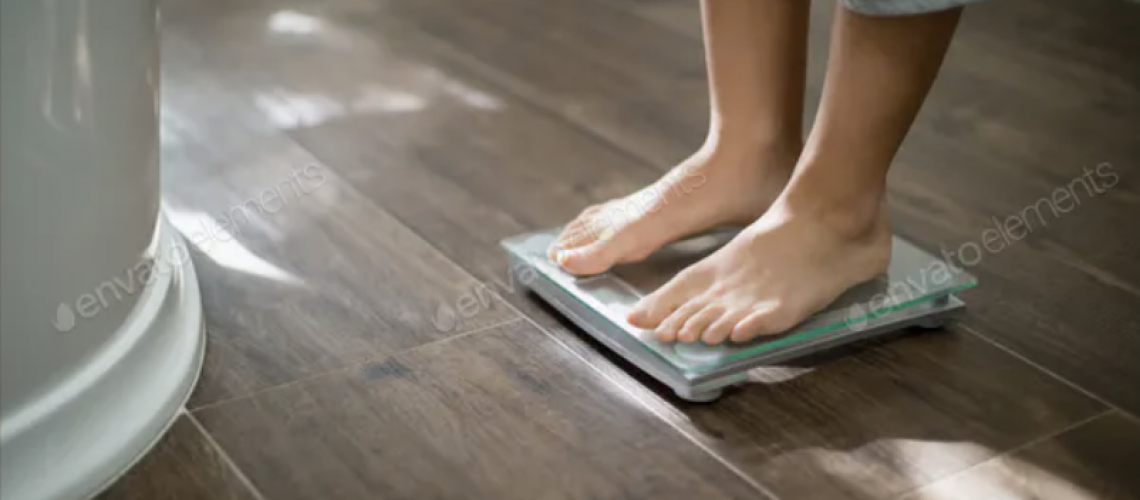Are you trying to lose weight or change the way you look? This is a key question to ask yourself when you embark on a fitness journey. For many people, the term ‘losing weight’ is a common goal and phrase to throw around when they are upset with how they look.
However, while they may say that is their goal, what they really desire could be very different. The aim could in face be to lose fat, add muscle and change the complete look of their body. Therefore, it is important to understand the difference between that and just wanting to lose weight before you start putting your tasks to work.
Having a crystal-clear vision is vital in anything in life and getting in shape is no difference. So, this article will go through the fundamental differences between weight loss and fat loss and provide more clarity for you to decide what you want to achieve.
Scale Weight
A huge difference between weight loss and fat loss is your weight on the scales. When your goal is to lose weight, provided you are following the right plan, you should see a steady decrease in your bodyweight numbers. However, this means losing weight from your body, which can often lead to losing fat and muscle at the same time. Becoming a lighter version of yourself does not necessarily mean improving the overall look of your body.
Fat loss is more about visual changes, where you look to lose body fat but add or maintain muscle at the same time. This means that you are changing the structure and look of your physique and not how much you weigh on the scales. When your goal is fat loss, visual improvements over time are going to matter much more than your bodyweight, which will fluctuate and even stay the same due to a number of reasons, such as more food in your system, more water retention, and the addition of muscle, which weighs more than fat.
Body Shape
The exact time it takes to see great changes in your body can depend on the individual, but on most occasions, you will start to see progress with your physique after eight weeks of consistently being in a calorie deficit. This is why it is very important to take weekly progress pictures of yourself and your physique, including when you first start. That way, you can see visual changes when it comes to body fat levels, toning and overall structure of your body.
At the end of the day, people want to look good – your scale weight is not going to determine how you look in front of the mirror and in front of other people, but a change in body shape will. Once you start to see visual changes, the real excitement kicks in, and you will want to continue to see how much more you can improve your body shape by dropping body fat levels further and even adding some more muscle.
Training and Exercise Regime
Another noticeable difference between weight loss and fat loss will be what you do in terms of exercise. With weight loss, you are more likely to be focusing on cardio, with resistance training acting as a support. The cardio you perform can be of a higher intensity, such as High Intensity Interval Training, running, cycling, rowing machine and more, while the resistance training will be lighter, less frequent and less intense. With weight loss, increasing your output will be very important to achieving your goal, whatever way you can do it. You do not have to do lots of resistance training to achieve this goal if you do not want to, although it is recommended.
Fat loss is revolved more around resistance training, as building muscle and improving your physique is ultimately the goal. Therefore, you will be doing more sessions at a higher intensity, with the aim of improving your strength, stability and mobility in the process. Of course, people start at different points, so make sure that you focus on isolation movements if you are someone with limited training experience. You should then aim to support your resistance training with a low intensity, sustainable form of cardio to burn those extra calories that will place you in a calorie deficit during the day.
Nutritional Differences
Arguably the biggest difference between weight loss and fat loss is with the nutrition. To lose weight consistently, you will need to be in a calorie deficit (burning more calories than you are consuming), with those calories being at the lower end of the spectrum. Of course, the balance between being on low calories and not starving yourself, which ultimately slows down your metabolism, is a fine one, so make sure that you have the right number for you and what you are trying to achieve. Once that number is set in place, and as long as it’s the right one, you will not have to change it much during your journey.
From a nutritional perspective, fat loss is more complicated than weight loss. The former involves a higher number of calories to start with because building muscle requires more calories and then maintaining it requires even more. However, you do still need to consistently need to be in a calorie deficit to lose body fat consistently and it is important that you stick to the diet plan that is given to you. Another big difference is that your calorie intake will change during your journey and the leaner you get, nutritional variables such as re-feed days will be more important.
Strength and Energy Levels
The final difference between weight loss and fat loss is the difference in your strength and energy. With weight loss, you are going to experience higher energy levels than you did when you were out of shape, but still less than if your goal is fat loss. This is because you are on lower calories than someone who is in a fat loss phase, meaning that energy levels will be more depleted. Strength may also be low due to the fact that you may lose muscle tissue, as resistance training is less of a priority.
With fat loss, your calorie and carbohydrate intake will be higher, so you will find that energy levels increase and you will be able to be more productive throughout the day. As mentioned before, resistance training is a crucial part of fat loss, so your strength levels will be higher due to the increase in muscle mass and the more weight you will be lifting over time.
Summary
So, before deciding what your fitness goal is, it is important to understand the fundamental differences between weight loss and fat loss. Weight loss revolves more around losing weight on the scales, more cardio, lower calorie intake, lower strength levels and a lighter version of yourself. Fat loss is more about body composition (how you look), resistance training, getting stronger, consuming more calories, adjusting your diet and less of a focus on your scale weight. Once you understand this, you will have a far better idea of what you are looking to achieve.
Photo Credits: Envato Elements


